Previously occupied by the Rocket Riverside restaurant, these premises are at the foot of Putney Wharf Tower, a refurbished office block, built in 1962 as the headquarters of International Computers Limited. In 1998, an archaeological dig was carried out on the site of the curved extension to the tower, revealing the existence of a large house which stood here for 250 years. On the 1841 Tithe Map, it is recorded as Gothic House.
Framed drawings and text about William Chambers.
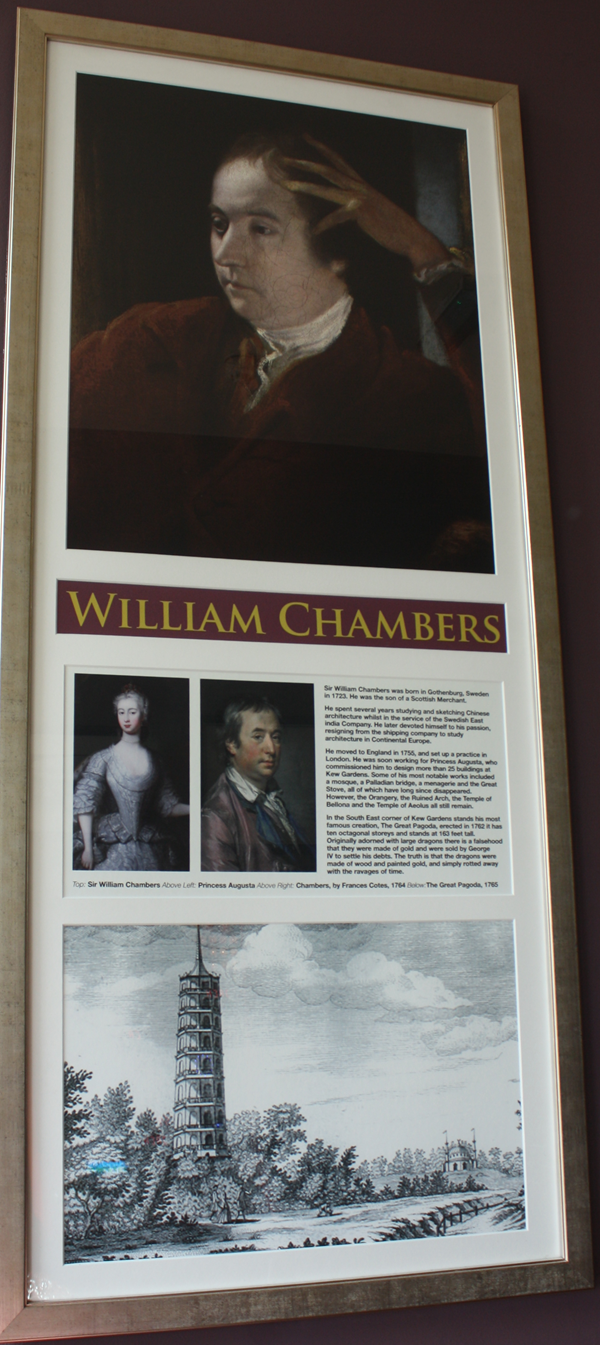
The text reads: Sir William Chambers was born in Gothenburg, Sweden in 1723. He was the son of a Scottish Merchant.
He spent several years studying and sketching Chinese architecture whilst in the service of the Swedish East India Company. He later devoted himself to his passion, resigning from the shipping company to study architecture in continental Europe.
He moved to England in 1755, and set up a practice in London. He was soon working for Princess Augusta, who commissioned him to design more than 25 building at Kew Gardens. Some of his most notable works include a mosque, a Palladian bridge, a menagerie and the Great Stove, all of which have long since disappeared. However, the Orangery, the Ruined Arch, the Temple of Bellona and the Temple of Aeolus all still remain.
In the South East corner of Kew Gardens stands his most famous creation, The Great Pagoda, erected in 1762 it has ten octagonal storeys and stands 163 feet tall. Originally adorned with large dragons there is a falsehood that they were made of gold and were sold by George IV to settle his debts. The truth is that the dragons were made of wood and painted gold, and simply rotted away with the ravages of time.
Top: Sir William Chambers Above Left: Princess Augusta Above right: Chambers, by Frances Cotes, 1764 Below: The great Pagoda, 1765
Framed photographs and text about Dame Ninette de Valois, the founder of the Royal Ballet.
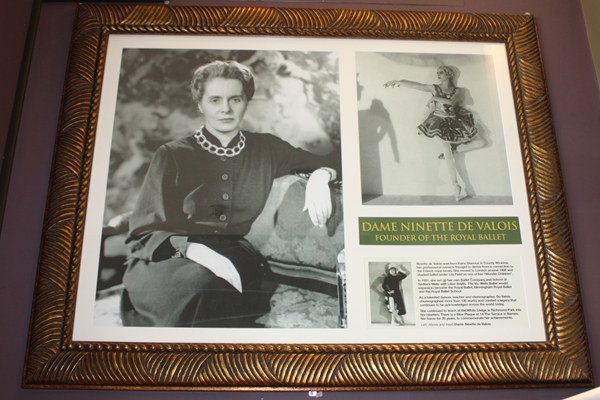
The text reads: Ninette de Valois was born Edris Stannus in County Wicklow, her professional name is thought to derive from a connection to the French royal family. She moved to London around 1908 and studied ballet under Lila Field as one of her “Wonder Children”.
In 1931, she set up her own Ballet Company and School at Sadler’s Wells with Lillian Baylis. The Vic-Wells Ballet would expand to become the Royal Ballet, Birmingham Royal Ballet and the Royal Ballet School.
As a talented dancer, teacher and choreographer, De Valois choreographed more than 100 works and created a legacy that continues to be acknowledged across the world today.
She continued to teach at the White Lodge in Richmond Park into her nineties. There is a blue plaque at 14 The Terrace in Barnes, her home for 20 years, to commemorate her achievements.
Left, above and inset: Dame Ninette de Valois
Framed drawings, photograph and text about Algernon Charles Swinburne.
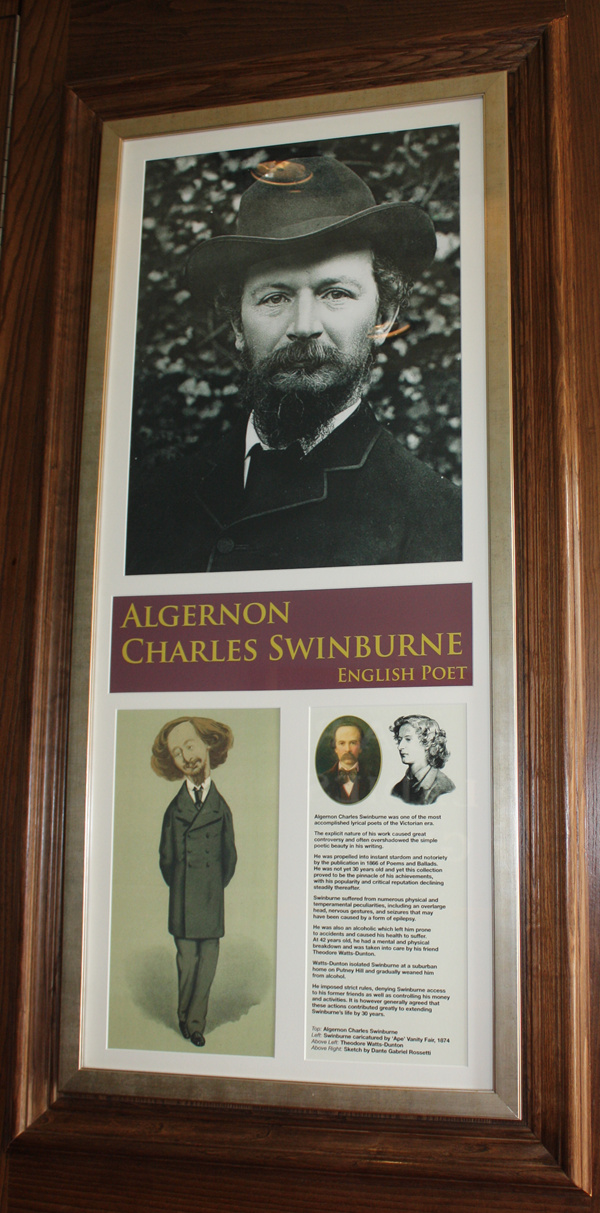
The text reads: Algernon Charles Swinburne was one of the most accomplished lyrical poets of the Victorian era.
The explicit nature of his work caused great controversy and often overshadowed the simple poetic beauty in his writing.
He was propelled into instant stardom and notoriety by the publication in 1866 of Poems and Ballads. He was not yet 30 years old and yet this collection proved to be the pinnacle of his achievements, with his popularity and critical reputation declining steadily thereafter.
Swinburne suffered from numerous physical and temperamental peculiarities, including an overlarge head, nervous gestures, and seizures that may have been caused by epilepsy.
He was also an alcoholic which left him prone to accidents and caused his health to suffer. At 42 years old, he had a mental and physical breakdown and was taken into care by his friend Theodore Watts-Dunton.
Watts-Dunton isolated Swinburne at a suburban home on Putney Hill and gradually weaned him from alcohol.
He imposed strict rules, denying Swinburne access to his former friends as well as controlling his money and activities. It is however generally agreed that these actions contributed greatly to extending Swinburne’s life by 30 years.
Top: Algernon Charles Swinburne
Left: Swinburne caricatured by ‘Ape’ vanity fair. 1874
Above left: Theodore Watts- Dunton
Above right sketch by Dante Gabriel Rossetti
Framed drawings and text about the River Thames Frost Fairs.
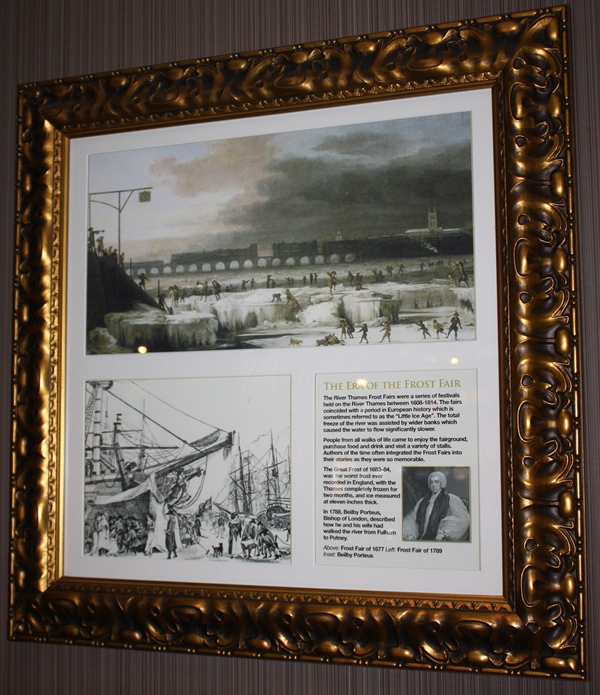
The text reads: The River Thames Frost Fairs were a series of festivals held on the River Thames between 1608-1814. The fairs coincided with a period of European history which is sometimes referred to as the “Little Ice Age”. The total freeze of the river was assisted by wider banks which caused the water to flow significantly slower.
People from all walks of life came to enjoy the fairground, purchase food and drink and visit a variety of stalls. Authors of the time often integrated the Frost Fairs into their stories as they were so memorable.
The Great Frost of 1683-84, was the worst frost ever recorded in England, with the Thames completely frozen for two months, and ice measured at eleven inches thick.
In 1788, Beilby Porteus, Bishop of London, described how he and his wife had walked the river from Fulham to Putney.
Above: Frost Fair of 1677 Left: Frost Fair of 1789
Inset: Beilby Porteus.
Framed photographs and text about Hyde Park Corner.
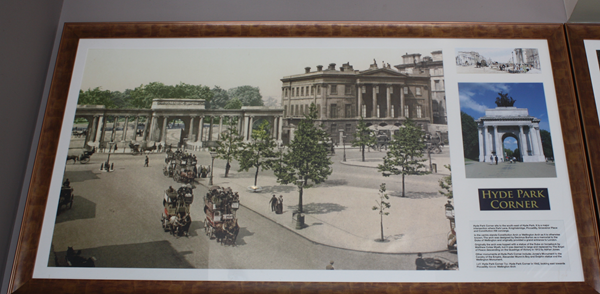
The text reads: Hyde Park Corner sits to the south-east of Hyde Park. It is a major intersection where Park Lane, Knightsbridge, Piccadilly, Grosvenor Place and Constitution hill converge.
In the centre stands constitution Arch or Wellington Arch as it is otherwise known. The arch was designed Decimus Burton as a memorial to the Duke of Wellington and originally provided a grand entrance to London.
Originally the arch was topped with a statue of the Duke on horseback by Matthew Cotes Wyatt, but it was deemed too large and replaced by The Angel of Peace descending on the Quadriga of Victory in 1912 by Adrian Jones.
Other monuments at Hyde Park Corner include; Jones’s Monument to the Cavalry of the Empire, Alexander Munro’s Boy and Dolphin statue and the Wellington Monument.
Left: Hyde Park Corner
Top: Hyde Park Corner in 1842, looking east towards Piccadilly
Above: Wellington Arch.
Framed prints and text about Richmond.
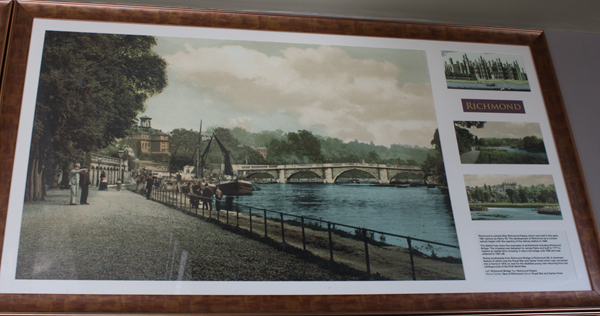
The text reads: Richmond is named after Richmond Palace which was built in the early 16th century by Henry VII. The development of Richmond as a London suburb began with the opening of the railway station in 1864.
The district has many fine example of architecture including Richmond bridge. The crossing was designed by James Paine and built in 1777 to replace an earlier ferry crossing. It was a toll bridge until 1859 and was widened in 1937-39.
Rising southwards from Richmond Bridge is Richmond Hill. A dominant feature of which was the Royal Star and Garter Hotel which was converted into a home in 1916, to care for the disabled young men returning home from the Battlefields of the First World War.
Left: Richmond Bridge
Top: Richmond Palace
Above centre: View of Richmond
Above: Royal Star and Garter Hotel.
Framed photographs and text about Imperial College Boat Club.
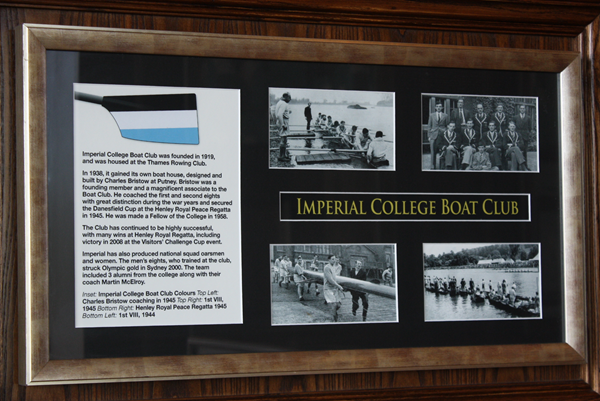
The text reads: Imperial College Boat Club was founded in 1919, and was housed at the Thames Rowing Club.
In 1938, it gained its own boat house, designed and built by Charles Bristow at Putney. Bristow was a founding member and a magnificent associate to the Boat club. He coached the first and second eights with great distinction during the war years and secured the Danesfield Cup at the Henley Royal Peace Regatta in 1945. H was made a fellow of the college in 1958.
The club continued to be highly successful with many wins at Henley Royal Regatta. Including victory in 2008 at the visitors’ Challenge Cup event.
Imperial has also produced national squad oarsmen and women. The men’s eights, who trained at the club, struck gold in Sydney 2000. The team included 3 alumni from the college along with their coach Marin McElroy.
Inset: Imperial College Boat Club Colours
Top left: Charles Bristow coaching in 1845
Top right: 1st VIII 1945
Bottom right: Henley Royal Peace Regatta 1945
Bottom left 1st VIII, 1944.
Framed photographs and text about Putney Town Rowing Club.
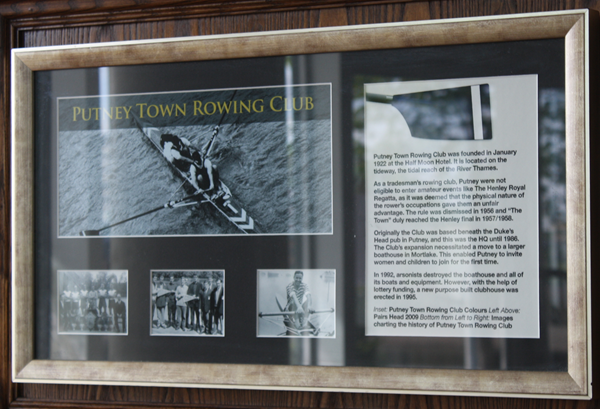
The text reads: Putney Town Rowing Club was founded in January 1922 at the Half Moon Hotel. It is located on the tideway, the tidal reach of the River Thames.
As a tradesman’s rowing club, Putney were not eligible to enter amateur events like The Henley Royal Regatta, as it was deemed the physical nature of the rower’s occupations gave them an unfair advantage. The rule was dismissed in 1956 and “The Town” duly reached the Henley final in 1957/58.
Originally the Club was based beneath the Duke’s Head pub in Putney, and this was HQ until 1986. The clubs expansion necessitated a move to a larger boathouse in Mortlake. This enabled Putney to invite women and children to join for the first time.
In 1992, arsonists destroyed the boathouse and all of its boats and equipment. However, with the help of lottery funding, new purpose built clubhouse was erected in 1995.
Inset: Putney Town Rowing Club Colours
Left above: Pairs Head 2009
Bottom from left to right: images charting the history of Putney Town Rowing Club.
Framed photographs and text about the Leander Club.
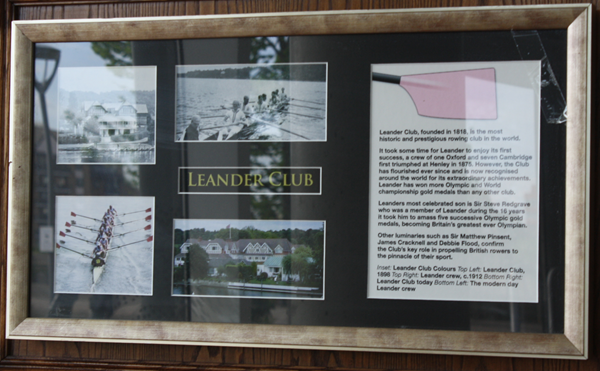
The text reads: Leander Club, founded in 1818, is the most historic and prestigious rowing club in the world.
It took some time for Leander to enjoy its first success, a crew of one oxford and seven Cambridge first triumphed at Henley in 1875. However, the club had flourished ever since and is now recognised around the world for its extraordinary achievements. Leander has won more Olympic gold medals than any other club.
Leanders most celebrated son is Sit Steve Redgrave who was a member of Leander during the 16 years it took him to amass five successive Olympic gold medals, becoming Britain’s greatest ever Olympian.
Other luminaries such as Sir Matthew Pinsent, James Cracknell and Debbie Flood, confirm the Club’s key role in propelling British rowers to the pinnacle of their sport.
Inset: Keander Club Colours
Top left: Leander crew, c.1912
Bottom right: Leander Club today
Bottom Left: The modern day Leander crew.
Framed photographs and text about the Thames Rowing Club.
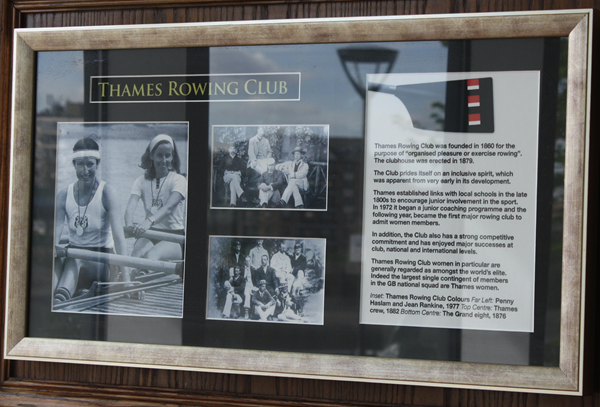
The text reads: Thames Rowing Club was founded in 1860 for the purpose of “organised pleasure or exercise rowing”. The clubhouse was erected in 1879.
The club prides itself on an inclusive spirit, which was apparent from very early in its development.
Thames established links with local schools in the late 1800’s to encourage junior involvement in the sport. In 1972 it began a junior coaching programme and the following year, became the first major rowing club to admit women members.
In addition, the club also has a strong competitive commitment and has enjoyed major successes at club, national and international levels.
Thames Rowing Club women in particular generally regarded ad amongst the world’s elite. Indeed the largest single contingent of members in the GB national squad are Thames women.
Inset: Thames Towing Club Colours
Far left: Penny Haslam and Jean Rankine, 1977
Top centre: Thames crew, 1882
Bottom centre: The Grand Eight, 1876.
A framed photograph of a man washing Big Ben’s face.
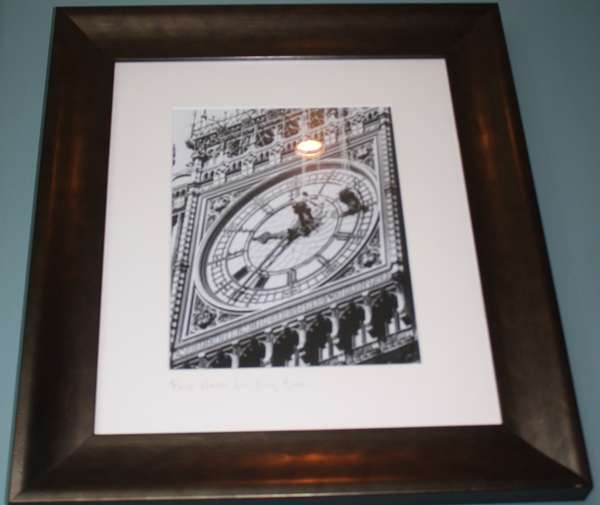
A framed photograph of people jumping in at Embankment.
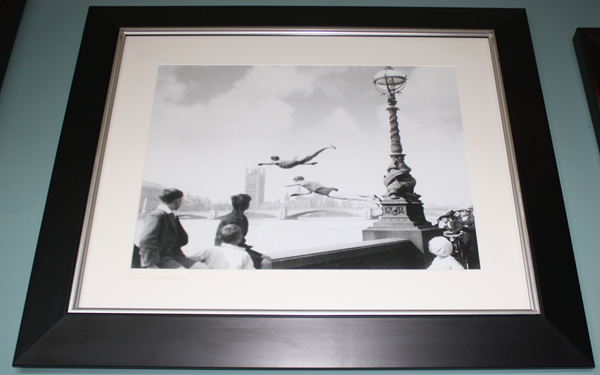
A framed photograph of a horse cooling off by Lambeth Bridge.
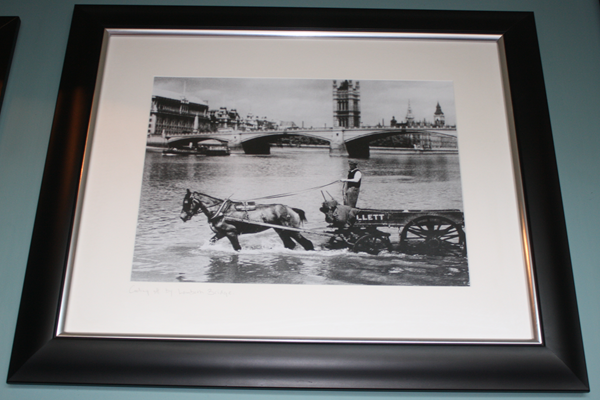
A framed photograph of a sailing barge.
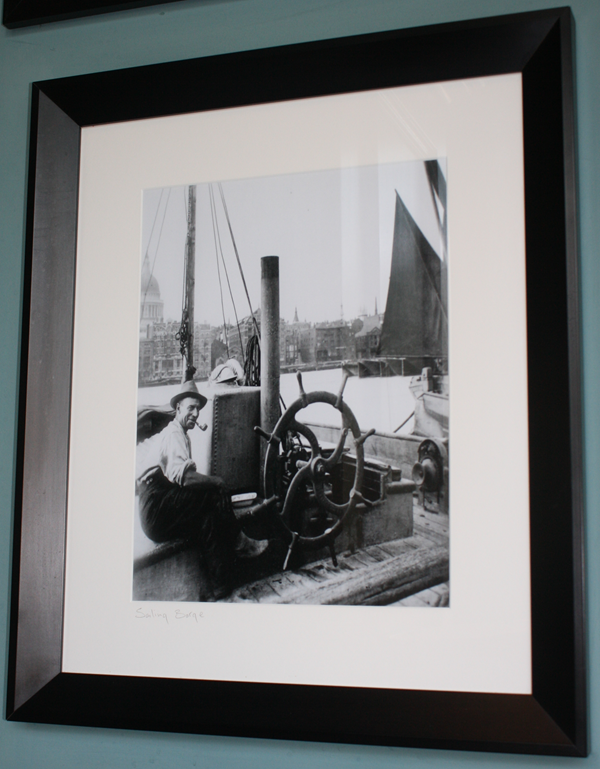
A framed photograph of people building sandcastles on Tower Beach with help from the Chief Warder.
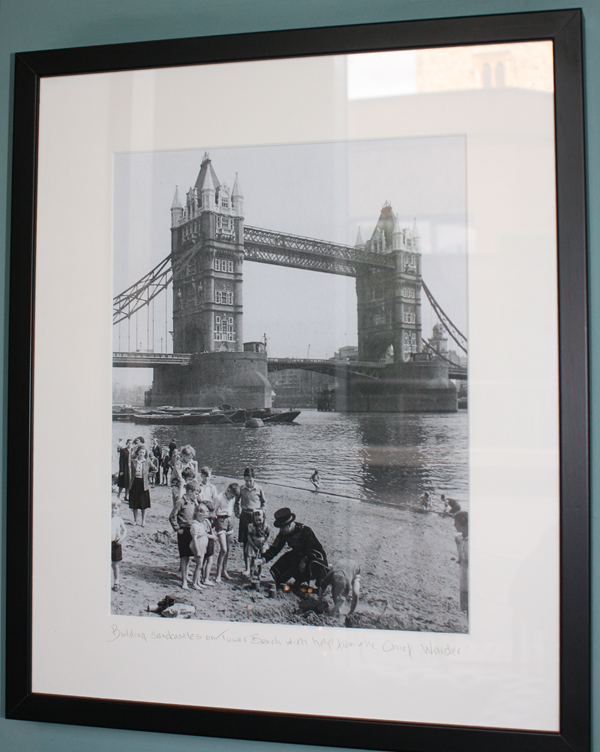
A framed photograph of Kensington Gardens, 1922.
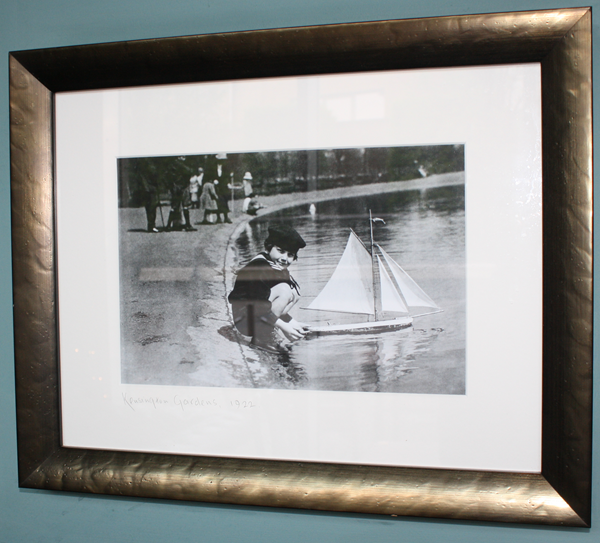
A framed photograph of Serpentine Swimmers, 1935.
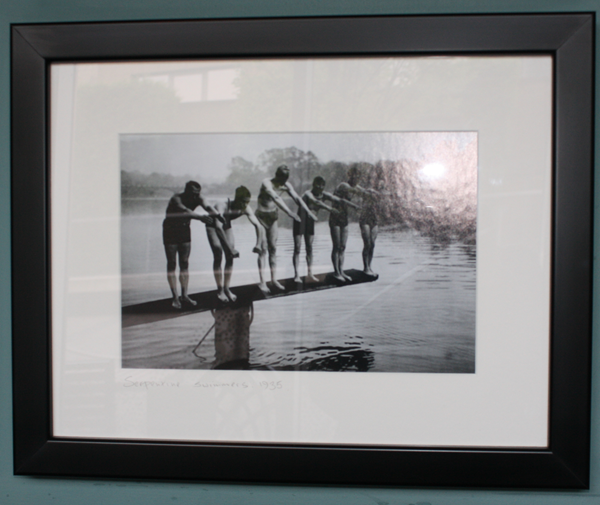
A framed photograph of the Houses of Parliament from Lambeth Pier.
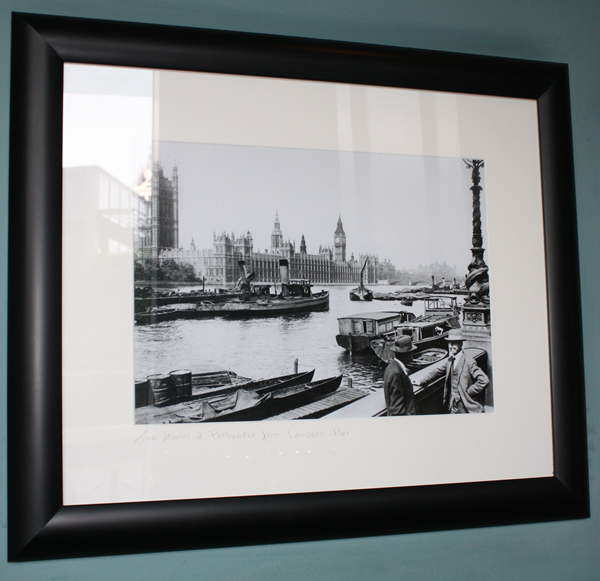
A charcoal drawing entitled Putney Boathouses, by Jo Bowen.
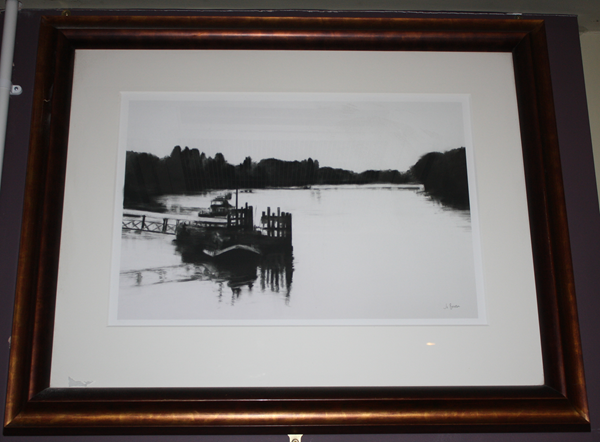
This charcoal was drawn from Bishops Gardens and shows Putney Bridge and the Embankment. It shows the artist’s extraordinary talent for handling charcoal and captures a quiet tranquil time of the day as the sun rises and long reflections dance on the river.
An oil painting entitled St Pauls and the City, by Jo Bowen.
This oil although representational is distinctly post-impressionist and shows St Paul’s and the city from Waterloo Bridge. It is bright and imaginative and shows another style and approach to Jo’s work.
External photograph of the building – main entrance.
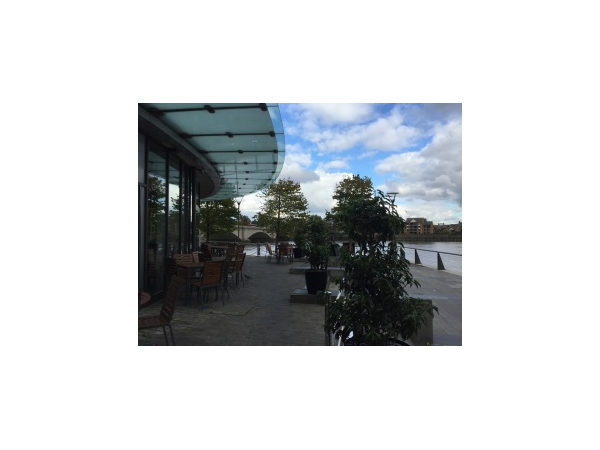
If you have information on the history of this pub, then we’d like you to share it with us. Please e-mail all information to: pubhistories@jdwetherspoon.co.uk